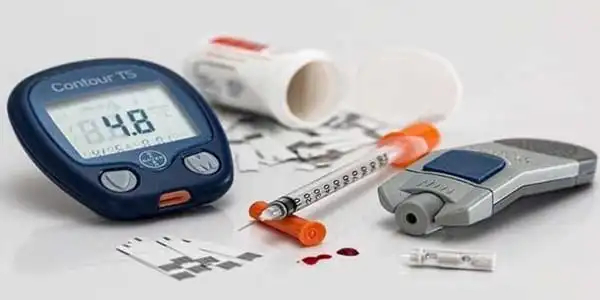Lund University researchers detected elevated amounts of a microRNA in type 2 diabetes that has a deleterious influence on insulin secretion. Their research on human insulin-producing cells in the pancreas also shows that by lowering the quantities of this microRNA, it is feasible to increase insulin output. The development of novel treatments for persons with the condition is an essential focus of the research.
The pancreas’ ability to manufacture and release insulin is compromised in type 2 diabetes. MicroRNAs have been implicated in the degradation process in previous research. MicroRNAs are non-coding RNAs that control the amount of genes and proteins in the cell. Reducing the amount of microRNA could be a possible treatment for patient with type 2 diabetes.
According to research, a specific microRNA known as miR-200c appears to influence insulin output in diabetic mice. Until date, there has been a dearth of understanding concerning the role of miR-200c in human insulin secretion.
“Our findings show that miR-200c levels differ between those with and without the illness. Few studies in this field have used as much human material as the one used in this study “According to Lena Eliasson, a diabetes researcher at Lund University Diabetes Centre (LUDC) and the study’s corresponding author, published in the scientific journal Diabetes.
Our findings show that miR-200c levels differ between those with and without the illness. Few studies in this field have used as much human material as the one used in this study.
Lena Eliasson
Increased insulin secretion
Their measurements of miR-200c in islets of Langerhans from 34 dead donors with and without type 2 diabetes revealed that those with the condition had higher levels of miR-200c. The researchers also conducted studies in islets of Langerhans from dead donors with type 2 diabetes to see if it was possible to improve insulin secretion by lowering miR-200c levels in the cells. The experiments resulted in enhanced insulin secretion in the three donors’ Langerhans islets.
“All contributors saw an increase that was around threefold. We would have loved to run this experiment on more donors, but new donated material is difficult to come by. Of course, we are grateful to the donors who have made various contributions to the study. In order to create new treatments, it is critical to first understand what occurs to insulin secretion and how it is regulated in humans “Jones Ofori, a researcher in diabetes and epigenetics at LUDC and one of the study’s main authors, states.

Improved treatments
The study’s authors intend to confirm their findings in diabetic rats to further understand what happens to insulin secretion when miR-200c levels are reduced. One key research goal is to create novel treatments for type 2 diabetes. Previous research at the Lund University Diabetes Centre has revealed that diabetes may be classified into several subgroups based on disease development, and that some groups of patients have greater problems with insulin secretion than others.
“The current therapeutic choices for type 2 diabetes are not ideal for everyone. Several research have revealed that there is a need for more tailored therapy for type 2 diabetes. It could be intriguing to target a treatment towards groups with substantial insulin secretion impairment. In the long run, we hope that our research will lead to medications that will help with blood sugar control” says Lena Eliasson.
The study team is now mapping microRNAs that may be implicated in insulin secretion in type 2 diabetes. This understanding is critical in the creation of precise medicines. “We can see from our microRNA mapping that miR-200c is a strong candidate for targeted therapy, which has also been found in previous investigations. The development of an insulin treatment that only affects the islets of Langerhans and no other tissues is a challenge that lies ahead of us “Lund University’s Lena Eliasson, a professor of experimental diabetes research, agrees.
MikroRNA and islets of Langerhans
MicroRNAs are small, non-coding RNA molecules that influence protein creation. Many proteins in a cell or signaling pathway can be regulated by a single microRNA. MicroRNA play a role in the development of type 2 diabetes as well as the pancreas’ ability to release insulin.
The Langerhans islets are mostly composed of beta cells that create insulin and alpha cells that produce glucagon. These hormones control blood sugar levels and metabolism. Because of their isolated location, the Langerhans islets are difficult to examine.





